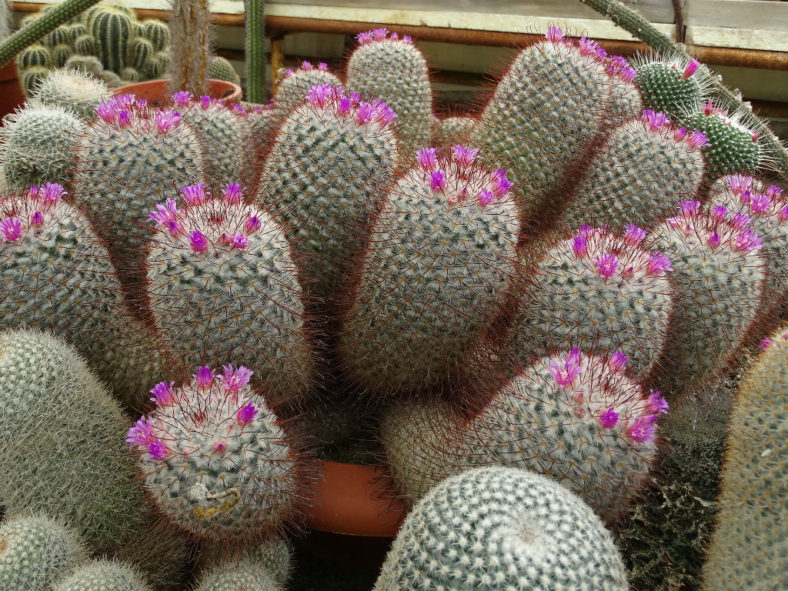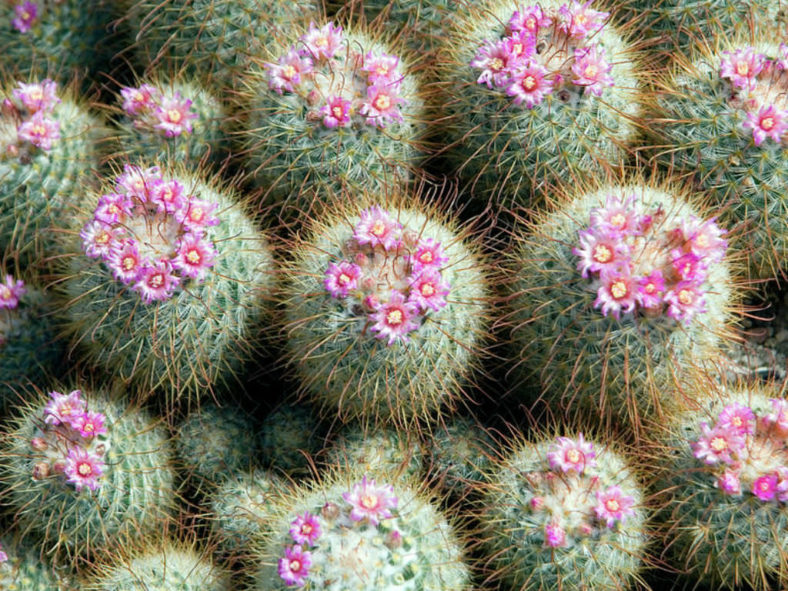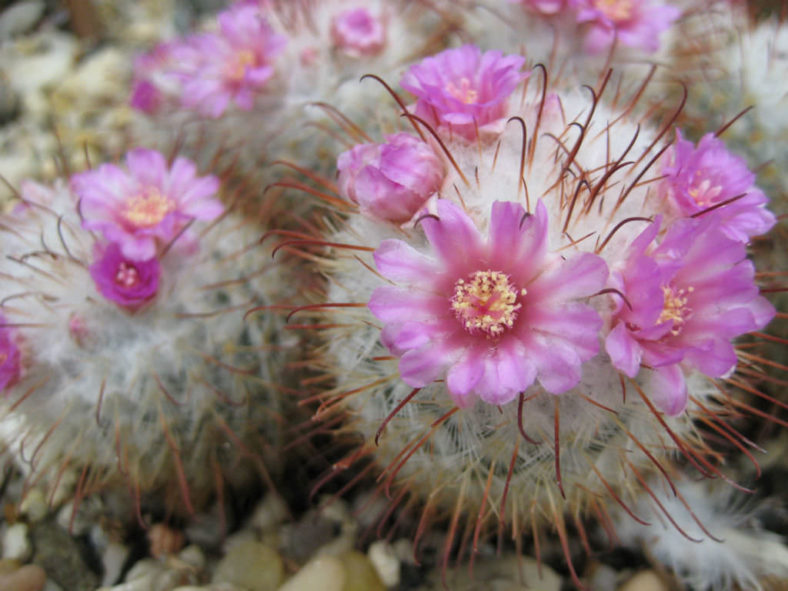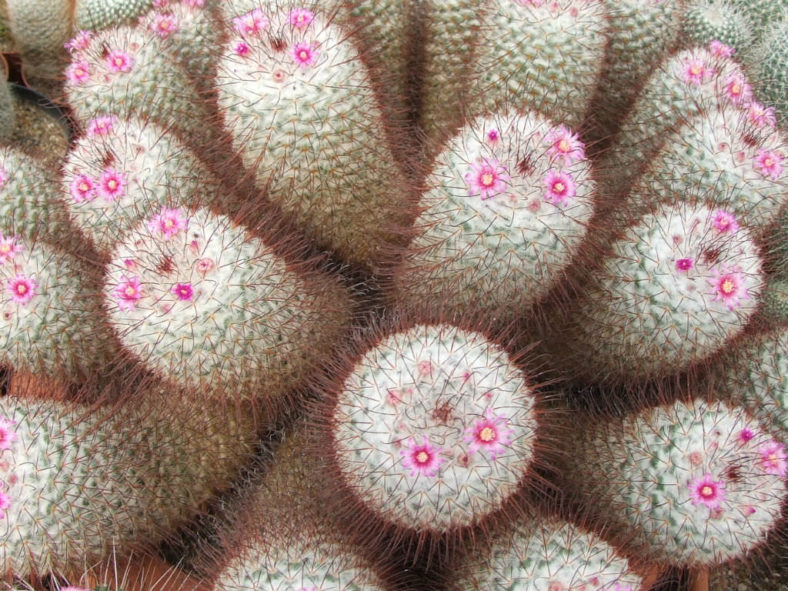Scientific Name
Mammillaria bombycina Quehl
Common Name(s)
Silken Pincushion Cactus, Silken Pincushion
Synonym(s)
Chilita bombycina, Ebnerella bombycina, Escobariopsis bombycina, Neomammillaria bombycina
Scientific Classification
Family: Cactaceae
Subfamily: Cactoideae
Tribe: Cacteae
Subtribe: Cactinae
Genus: Mammillaria
Origin
Mammillaria bombycina is native to western central Mexico (Jalisco and Aguascalientes states).
Description
Mammillaria bombycina is a small cactus with bright-green to grey-green stems with bulbous tubercles surrounded by downy white hairs and tipped with clusters of spines. The stems can grow up to 8 inches (20 cm) in height and 2.4 inches (6 cm) in diameter. Some clones cluster aggressively as they age and form gorgeous mounds reaching up to 3 feet (90 cm) in diameter. Each areole can bear 30 to 60 radial and 3 to 8, usually 4 central spines. The radial spines are short, white to yellowish-white, measuring up to 0.3 inches (0.8 cm) long, while the longer central spines are yellow with darker tips or reddish-brown, measuring up to 0.45 inches (1.1 cm), with the lowermost one hooked downwards and up to 0.8 inches (2 cm) long.
During the spring, Mammillaria bombycina produces circular clusters of deep rose-pink flowers near the tips of the stems. The flowers are funnelform and can reach up to 0.6 inches (1.5 cm) in length and diameter. The club-shaped fruits are pale pinkish-green.

Hardiness
USDA hardiness zones 9a to 11b: from 20 °F (−6.7 °C) to 50 °F (+10 °C).
How to Grow and Care
To encourage better flowering, allow the plants to enjoy a cooling period in the winter and suspend watering. Unlike many other cacti, which use their ribs as storage devices, Mammillaria feature raised tubercles, from which spines emerge. When you water, the tubercles will expand to increase water storage. The flowers emerge from the axils of these tubercles on the previous year's growth, which accounts for their interesting halo effect. The cactus mustn't be exposed to prolonged dampness and sitting water. Never let your cactus sit in a dish of water. Lastly, ensure to fertilize during the growing season for the best results.
Repot as needed, preferably during the warm season. To repot Mammillaria, ensure the soil is dry before repotting, then gently remove the pot. Knock away the old soil from the roots, removing any rotted or dead roots. Treat any cuts with a fungicide. Place the plant in its new pot and backfill it with potting soil, spreading the roots as you repot. Leave the plant dry for a week or so, then begin to water lightly to reduce the risk of root rot.
See more at How to Grow and Care for Mammillaria.
Links
- Back to genus Mammillaria
- Succupedia: Browse succulents by Scientific Name, Common Name, Genus, Family, USDA Hardiness Zone, Origin, or cacti by Genus
Photo Gallery
Click on a photo to see a larger version.


